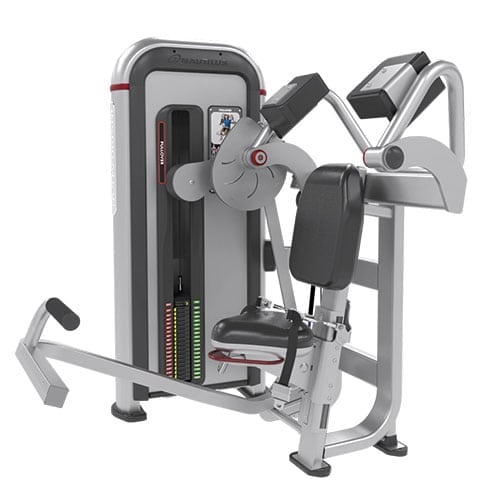

No drugs, no special diet, no marathon workout just a simple routine of three sets of four very basic exercises full squats, standing presses, barbell curls, and movements on our new lat machine During the same period he gained over fifteen pounds of muscular body-weight, increased his arms almost exactly tow inches, and increased his strength enormously. Some new “gimmick?” An unproven theory? Think what you like, but we built one test subject’s lats to a point that would normally have required at least tow full years of training, in less than six weeks, on a program of three weekly workouts of exactly forty-eight minutes each. It wasn’t until 1970 however, when Jones began to devote his attention fully to bodybuilding, that a mass produced Jones’ machine would hit gyms around the United States.Ĭreated as part of Jones’ high intensity ethos, he modestly titled his pullover machine ‘the upper body squat’ Writing in Ironman Magazine in 1970, Jones waxed lyrical about his device Jones, the man behind the infamous Colorado experiment and the founder of Nautilus, first created a pullover machine in 1948. What is fascinating about this particular period was the introduction of the machine pullover thanks to the controversial Arthur Jones. Frank in particular credited the exercise for helping to develop his famous vacuum pose shown below. It was a favourite and highly regarded movement which, in the advent of the ‘golden age’ of bodybuilding, continued to flourish.Īs noted by Frank Zane, the 1960s and 70s saw bodybuilding aficionados from Bill Pearl to Mike Mentzer use the pullover exercise to build their chest and lat muscles. Joseph Curtis Hise included it as part of his essential chest exercises in 1946 while Reg Park regularly used over 200 lbs. This was the case not only for proponents of the 20 rep squat like Peary Rader and Mark Berry but also, as shown by Randy Roach, men like Bob Hoffman and Joe Weider. In any case were you to chat to someone from the mid-twentieth century about the importance or usefulness of the pullover exercise, you would likely have been told that it was essential for anyone seeking to gain weight and muscle. In later years the combination was seen as a form of active rest. The reasoning for this combination followed Calvert’s in that it was believed to extend the size of the rib cage.

Much to the delight and torture of gym goers, this programme advised a heavy set of squats followed by a set of lightweight and high rep pullovers. As detailed previously on this website, the 1920s and 30s saw the emergence of weight gaining programmes based on a system of 20 rep squats. While Calvert can perhaps be credited with first introducing the exercise to a mass audience, the pullover’s true popularisation came a decade later with the emergence of squat based hypertrophy programmes. Coupled with this was the pullover’s positive effect on breath capacity. In the first instance it was seen to help increase the size of the rib cage and build muscle. Interestingly Calvert praised the pullover on two fronts. Described by Calvert as “the very best exercise for increasing the size of the rib-box”, the pullover was highlighted as an exercise of great importance. While it has proven nigh on impossible to find the first exerciser to use the pullover exercise, the lifting community has often pointed to Alan Calvert’s 1911, Super Strengthbook as a pivotal moment in the exercise’s popularity. That the pullover movement, not to be confused with the pullover and press exercise, was linked to improved breathing capacity surely helped to elevate its importance at this time. Muller devised whole workouts around the ability to breath deeply, newspaper columnists such as the Irish Times’ ‘Huck Finn’ advised dumbbell deep breathing exercises akin to the Wills’ Cards. It was here that the pullover exercise was first devised. One point that constantly fascinates me was the interest and popularity in ‘deep breathing’ exercises used in conjunction with traditional weightlifting. Much to my shame given the fact that my PhD research encompasses this era, I have been rather slack about discussing some of the more unusual exercises from this time.

The pullover exercise has fallen from grace in the lifting community, from a once hallowed movement to a more niche and often poorly executed assistance lift.Īs attested by the Wills photographs above, the pullover exercise was fairly common knowledge amongst physical culturists in the opening decade of the twentieth-century. So today, we’ll begin by examining the popularity and history of the pullover from the early to late twentieth-century. As is so often the case, I set to work uncovering the history of this particular movement with the result being this very article.


 0 kommentar(er)
0 kommentar(er)
